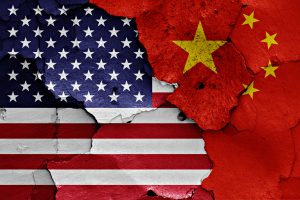A recent report by the House Select Committee on the CCP issued a startling warning: U.S. Department of Defense (DoD) funding has routinely sponsored research conducted by institutions with deep links to China’s defense industrial base. More than 700 publications supported by DoD funding between 2023-2025 involved collaboration with Chinese defense-affiliated institutions – including some that had been at least nominally blacklisted from receiving U.S. equipment.
The report – aptly titled “Fox in the Henhouse” – highlights how a breakdown in interagency communication has led the U.S. government to systematically fail to enforce laws barring Chinese defense institutions from receiving material support.
Defenders of open science are quick to claim that coauthoring research papers is inconsequential. After all, if Chinese researchers can read published articles in Nature, what makes coauthorship such a threat? The important difference is that active research collaboration may provide Chinese defense-linked researchers with tacit knowledge, sensitive data, and experimental designs – insights that never make it into printed research, but that are immensely valuable to accelerating China’s military modernization.
For example, a 2025 U.S. Navy-funded study on swarm mission planning was co-authored by the University of Texas and a “Seven Sons of National Defense” school that had been on the U.S. Entity List since 2001. That collaboration gave Chinese defense-linked institutions access not just to results with direct military applications, but to the research process (such as choosing a decision-making model) in areas directly applicable to autonomous systems, cyber defense, and electronic warfare.
There is no reason U.S. taxpayer dollars should support research partnerships with foreign institutions that are building weapons for the People’s Liberation Army. The United States already prohibits companies identified on its 1260H list of Chinese military-affiliated companies from contracting with the Department of Defense, while the Commerce Department’s Entity List blocks exports of sensitive U.S. technology to named institutions. But these prohibitions are limited to restricting government procurement and equipment sales, not the allocation of research grants. This has allowed certain Chinese defense labs to benefit from U.S. funding, even while they are formally recognized as national security risks.
The Select Committee’s findings shed light on a much deeper problem with the U.S. approach to technology competition with China: A patchwork approach to oversight has created overlapping authorities between departments and agencies, leaving ample gaps for forum-shopping. Under existing authorities, it is theoretically possible for a Venezuelan company ineligible for contracting with DoD to still access equipment made in its laboratories; or for a sanctioned Russian oligarch to purchase data on Americans’ digital footprints even while being walled off from the U.S. banking system.
To begin closing some of these loopholes, one solution could be for the DoD to prohibit funding for any project that includes collaborators from institutions on any of the U.S. government’s myriad blacklists – including the Section 1260H list, the Entity List and the Treasury Department’s Non-SDN Chinese Military-Industrial Complex Companies List.
This is exactly the approach outlined in the Securing American Funding and Expertise from Adversarial Research Exploitation Act (SAFE Research Act), which passed this September as an amendment to the House version of the 2026 National Defense Authorization Act. If enacted, the amendment would make important changes by prohibiting federal STEM funding to researchers and universities who work with foreign entities known to pose a national security risk. It also mandates increased disclosure through appointed compliance officers of any collaborations or affiliations with adversarial foreign entities.
A decade into U.S. tech competition with China, it’s clear Washington would benefit from taking steps to harmonize its various blacklists. But as they take a more stringent view of international research collaboration, U.S. lawmakers would still do well to remember that the United States’ competitive edge in technology is built on open innovation. In 2022, for example, U.S. researchers collaborated with international partners on 40 percent of science and engineering articles. International collaborations don’t just expand the reach of American science, but also make it more influential, with co-authored work receiving more citations than work written by U.S. researchers alone.
What the United States needs is a set of rigorously enforced guardrails that apply in equal measure to exchanging equipment, personnel, information, or capital with problematic foreign entities – not a strict ban on cross-national scientific collaboration. The goal should not be to shut the door on all scientific collaboration, but to ensure that when American taxpayers foot the bill for scientific research, they do not unwittingly aid foreign militaries or train their defense engineers.
If Congress does take action to restrict cross-national research collaboration, it should carefully define what falls under the scope of “national security” so as to not adversely affect STEM research that benefits the United States. In public health, for example, China-U.S. collaboration has been fruitful on topics from SARS to HIV/AIDS; there can certainly still be valuable partnerships on particular subjects. And, in cases where research does fall under the scope of national security, the United States should feel confident turning to trusted partners to sustain collaboration.
As it begins harmonizing application of various technology restrictions, the United States must also be precise about what counts as a “defense-linked” institution. Past efforts built around vague terms like “military-civil fusion” left universities guessing, leading to overcorrection and in some cases strangling benign partnerships. To be effective, new restrictions must set clear, transparent criteria and improve information-sharing across agencies. Otherwise, blacklisted institutions will keep slipping through the cracks. The goal is to keep research open where possible – but to draw firm lines where collaboration feeds directly into adversaries’ military or commercial advantage.
The Select Committee’s findings are alarming: Taxpayer dollars should never underwrite breakthroughs that strengthen China’s military. A structural fix, whether through agency action or legislation like the SAFE Research Act, would empower the U.S. government to detect cases where this is happening. But an effective response should pair precise criteria for protecting national security with better cross-agency information sharing, if it wants to avoid stifling legitimate science.





























